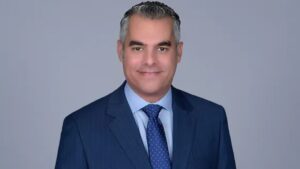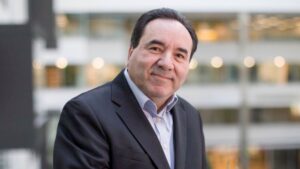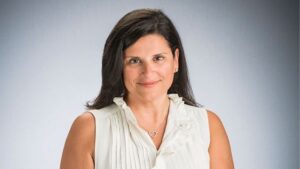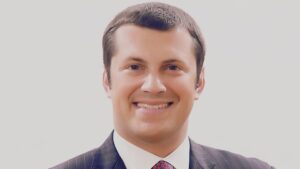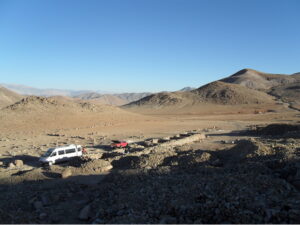
- Singapore | 24 April 2019

Can you give us a brief overview of Rolls-Royce’s presence in Singapore and the services that you offer to the aerospace industry?
Rolls-Royce operates in five strategic ‘home countries,’ which include the UK, the US, Germany, Norway, and Singapore. In Singapore, we have a significant presence at the Seletar Aerospace Park. Our Seletar Campus, covering an area of 154,000 sqm, is an integrated facility where we manufacture wide chord fan blades, assemble and test Trent engines, conduct employee and customer training, and offer a focused customer service center for our Asia Pacific airline customers. Our MRO joint venture, SAESL, provides support for the full lifecycle of an aero engine. Together, this totals 1,500 employees working in Singapore, and when added to our joint venture, we have a total workforce of 2,500 people.
Why did Rolls-Royce choose Singapore as one of its ‘home country’ markets?
Over half of our civil aerospace order books come from Asia and the Middle East, so it’s essential for us to have a presence that is close to our customers. It is also vital to our business model as 50% of our overall revenue comes from after-market services and support. Therefore, we understand the importance of a regional hub to the success of our customers’ operations. Our commitment is supported by Singapore’s very clear and structured national strategy, which places aerospace at the forefront of future development. The fact that Singapore has strong governance, transparency, and a highly skilled workforce all contribute to Singapore being one of our strategic locations.
Could you explain the reasoning behind Rolls-Royce’s partnerships with local universities and research institutions?
To continue developing cutting-edge technology, we need to work with the brightest and best minds from specialist universities globally. Rolls-Royce invested £1.2 billion in R&D in 2015 and has established a network of 31 University Technology Centers worldwide, of which Nanyang Technology University (NTU) is one. So we collaborated with NTU to form Rolls-Royce@NTU Corporate Lab. We have over 2,000 sq m in Singapore allotted for laboratories for data analytics, repair, electrical systems, and manufacturing. We believe that getting involved with partnerships with universities and research institutions will help nurture talent and inspire the next generation of future engineers and scientists. We take around 100 interns every year into our Singapore workforce, which is vital to ensuring a consistent and highly skilled talent pool, not just for us but also for the wider industry.
Can you provide an overview of the digital activities that Rolls-Royce is involved in?
Rolls-Royce supplies a broad range of services in the digital sector, from sensor technologies, software, and connectivity to improving productivity in the factories of the future. Building on our expertise in civil aerospace, where we are already using Big Data in our TotalCare services, we are also developing ship intelligence, and we are pioneering the technology behind autonomous vessels, utilizing IoT (digital connectivity), which can be remotely controlled. One of the major challenges in the digital field is creating adequate algorithms that can integrate the whole value chain. Rolls-Royce is adding value as a systems integrator, which is why we are seen as a strong partner in the country. We are starting to develop predictive rather than reactive maintenance. The ultimate target is to develop the technologies of the future by embracing digital, automation, and robotics developments, which will add value to our operations.
Could you please share with us what the key objectives of Rolls-Royce are in Singapore for the next 3-5 years?
Our main goal for the next few years is to see our Seletar Campus in Singapore operating at full capacity, producing over 8,600 fan blades annually and assembling 250 engines per year, including a new engine type. We are already in the pre-production phase of the Trent 7000 and expect to commence production in 2017. Furthermore, we are looking to maximize our digital technologies to improve and develop our products, services, factories, and processes.
Our priority is to ensure that our Seletar Campus can fully support our customer base in Asia and the Middle East, which accounts for over 50% of our civil aerospace order books. Our facilities in Singapore are a vital part of our business model as 50% of the company’s revenue comes from after-market services and support. We believe that investing in digital technologies will enhance our services and improve our operations, resulting in better support for our customers.
How do you plan to achieve these objectives and increase capacity?
We plan to increase our production capacity by investing in new technology and expanding our existing capabilities. The Seletar Campus is an integrated facility that includes fan blade manufacturing, engine assembly, and testing, as well as employee and customer training. We are also collaborating with local universities and research institutions to develop cutting-edge technology.
Additionally, we are exploring new opportunities in the defense sector to diversify our offerings and expand our customer base. We believe that by diversifying our offerings, we can achieve our goals and strengthen our position in the aerospace industry.
Could you elaborate on how you plan to maximize the use of digital technologies?
Rolls-Royce has a broad range of services within the digital sector, from sensor technologies, software and connectivity, to improving productivity in the factories of the future. We are working to develop ship intelligence, autonomous vessels, and predictive maintenance technologies to add value to our operations.
One of the main challenges in the digital field is creating algorithms that can integrate the whole value chain. As a systems integrator, we are adding value to the industry, which is why we are seen as a strong partner in the country. We have already begun using Big Data in our TotalCare services in civil aerospace and are now developing new technologies that will enhance our products, services, factories, and processes.
We also believe that investing in partnerships with local universities and research institutions will help nurture talent and inspire the next generation of future engineers and scientists. By taking around 100 interns every year into our Singapore workforce, we are ensuring a consistent and highly skilled talent pool, not just for us but also for the wider industry.


